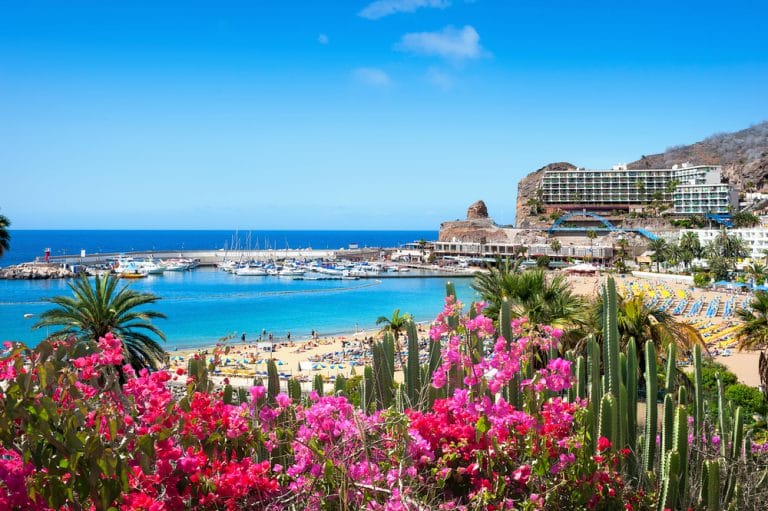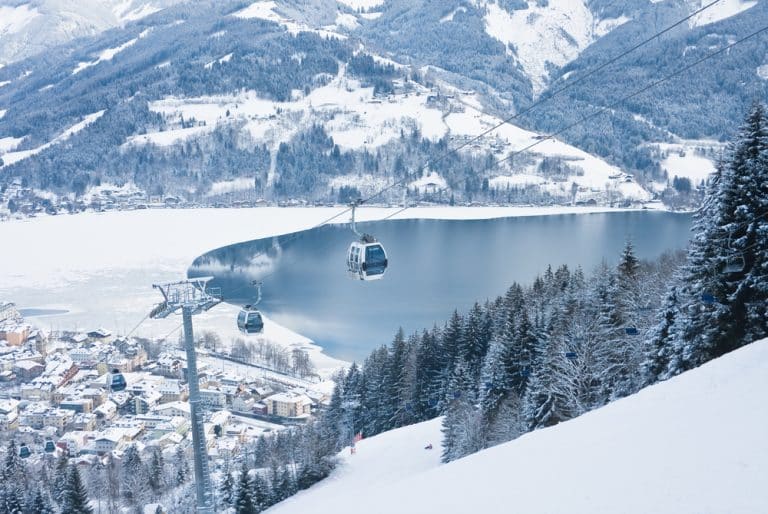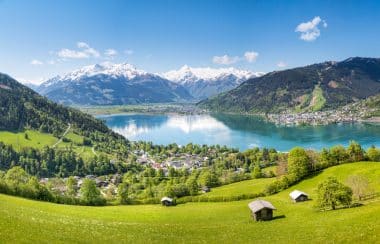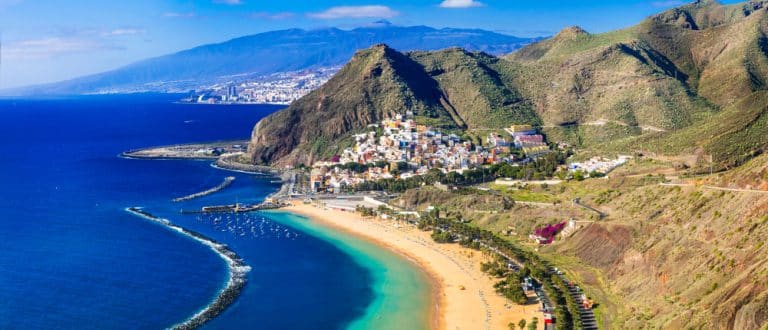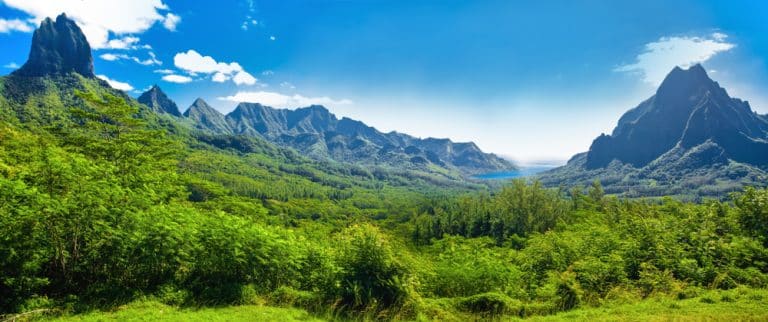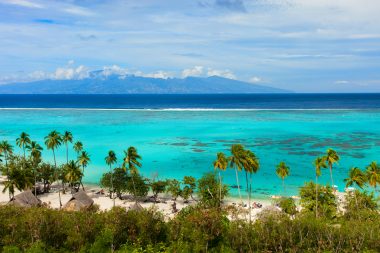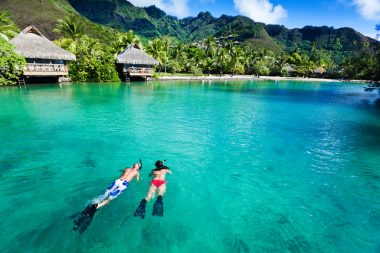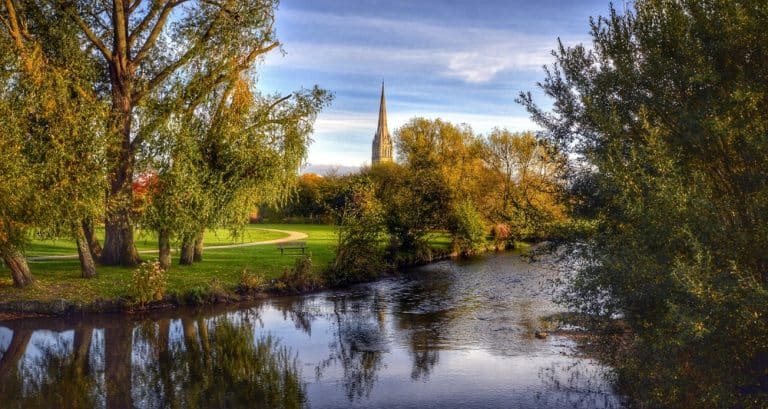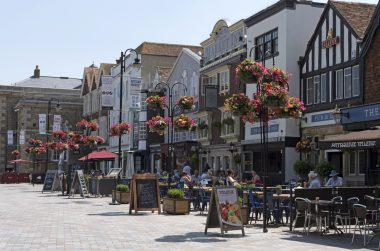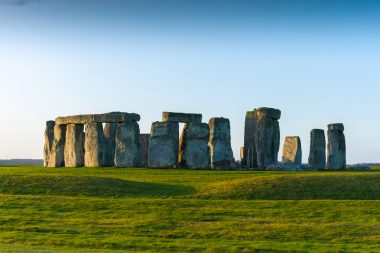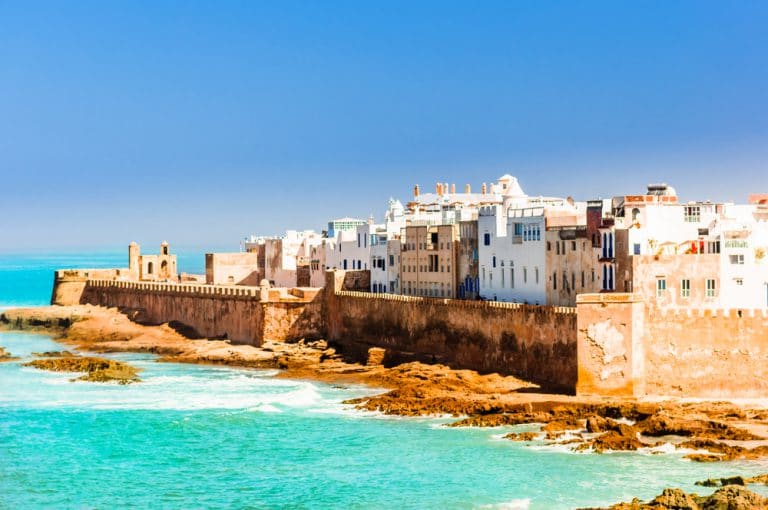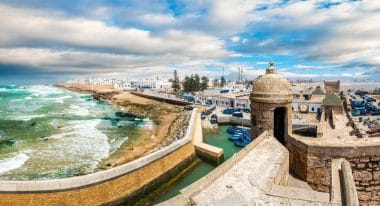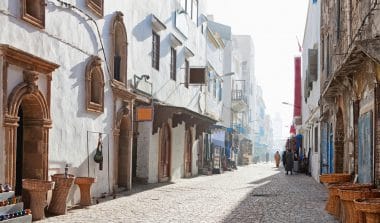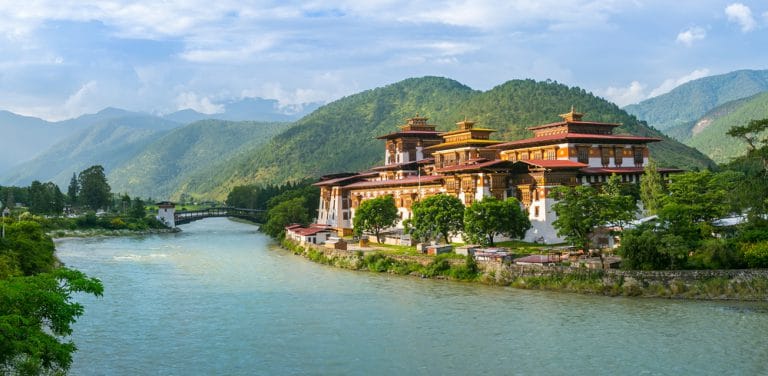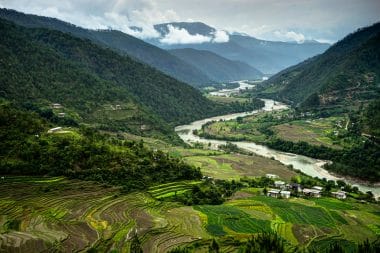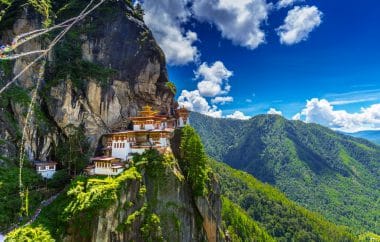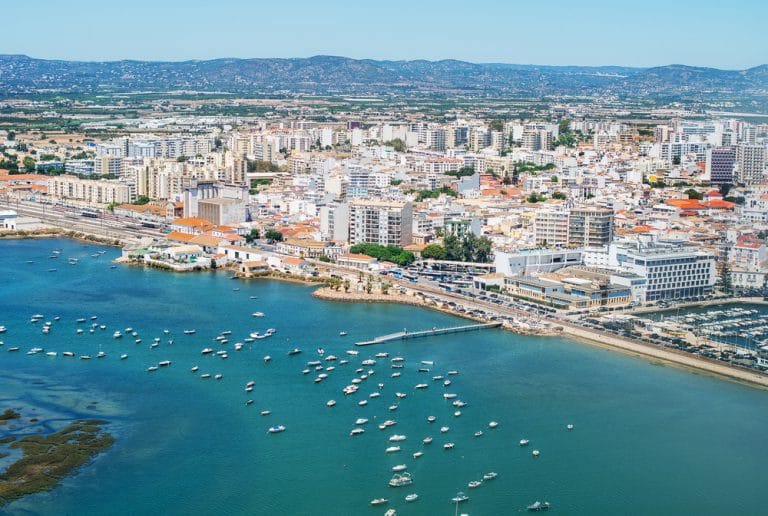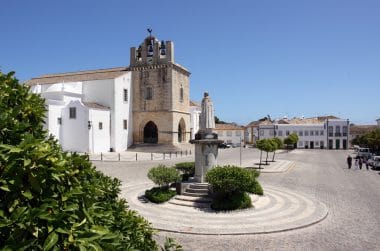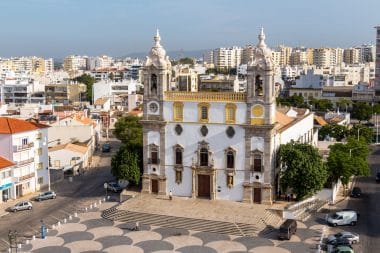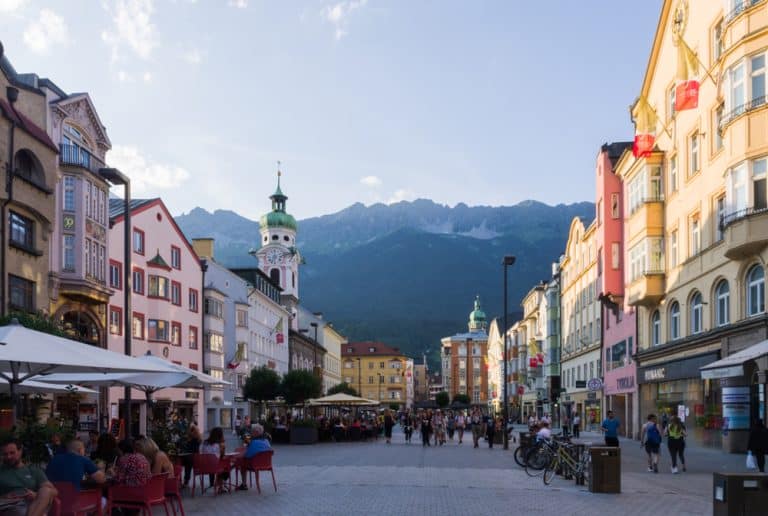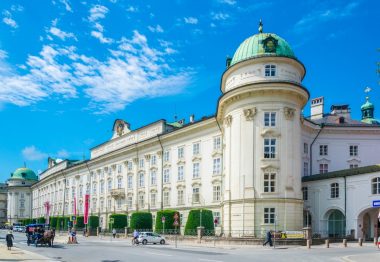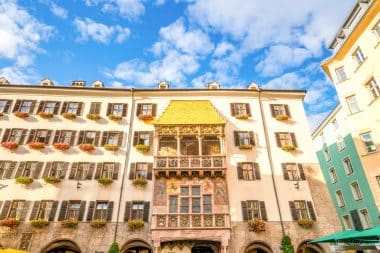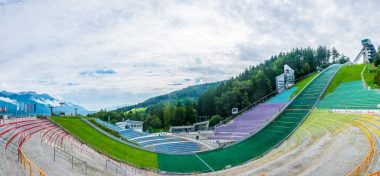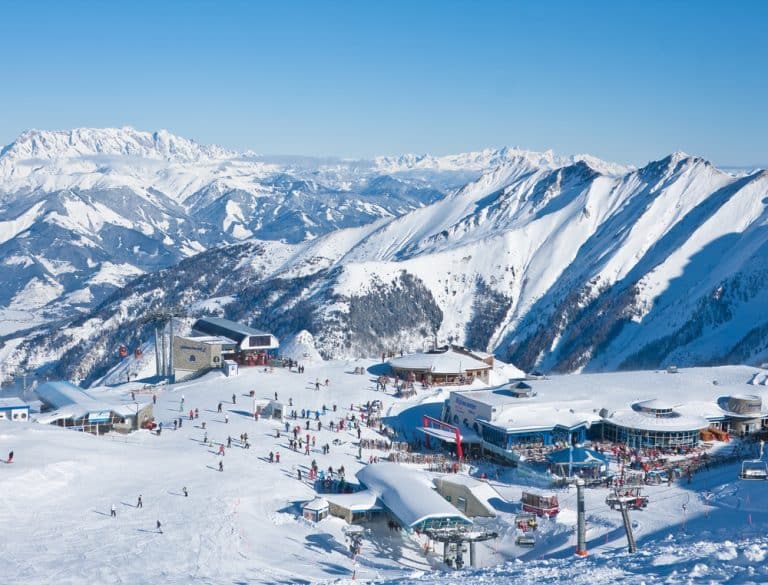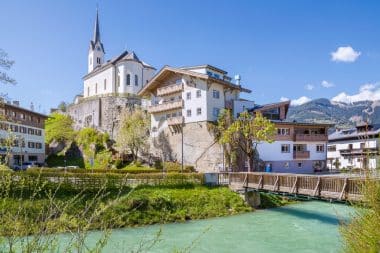Fishermen chug out to sea in their boats, tomato pickers harvest delicious fruits, donkeys pull the ploughs through golden-yellow terraced fields in the mountains, between banana trees the gaze is directed at men who gracefully swing their machetes and traffic jams in the streets of Las Palmas – between mountains and ocean: Gran Canaria begins the day.
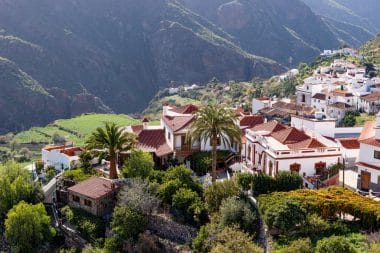
The almost circular island in the Atlantic Ocean is not exactly reminiscent of a continent. However, Gran Canaria is often referred to as such, because different levels of vegetation can be found in a very small area: sand dunes as high as houses, many shells ground into sand, cloud rocks, bizarre cliffs, extensive pine forests and burnt-out volcanic craters. Warm and clean sea, white beaches, pleasant temperatures – what the holiday guide promises – the island sticks to it.
Picturesque mountain lakes in the back room, the Atlantic Ocean on the doorstep – Gran Canaria on the Canary Islands in Spain offers both.
Between green hills, wild gorges and magnificent sandy beaches
Let’s start in the north of the island – Las Palmas undoubtedly dominates this terrain. However, the small country towns, lined with extensive banana plantations in the evergreen dress of the north coast, are also worth a trip.
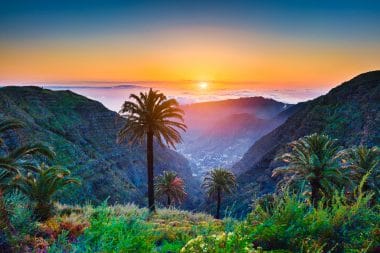
The Canarian metropolis surprises with its brilliant location as soon as it lands. If you sit on the right side of the plane, you can see the narrow land bridge that connects Las Palmas with a peninsula. While the harbour is the reason for the cosmopolitan character of the island’s capital, the country towns in the green hinterland are decidedly traditional.
International flair next to old town alleys: a stroll through the island’s capital
It’s been a long time – no high-rise building far and wide, you could walk lonely along the beach and out in the waves a caravel rocked by every now and then. Columbus is said to have quickly fled… We linger for a moment!
The old town of Vegueta is the oldest colonial city in Spain. Massive buildings underline the former splendour. Even after 500 years, you can still feel the charm of the founding years here. Vegueta is dominated by the Catedral de Santa Ana on the plaza of the same name. The pulse of the impressive old town beats slowly, especially on weekends when the traffic dries up. Every step echoes on the cobblestones around the cathedral.
A stroll through Las Palmas, about 1 kilometre long promenade lined with Art Nouveau houses, Calle Mayor de Triane, is popular. In the side streets you will find delightful little boutiques.
The Columbus House – beautiful to look at from the outside, an exciting journey into the time of Columbus from the inside. Also worth seeing: The place where Columbus may have prayed – Ermita de San Antonio Abad.
Gourmets will find culinary diversity and excellent cuisine in the ancient city palace. Montesdeoca is on everyone’s lips and is the number one restaurant in Las Palmas.
Tip: Las Palmas is far too spacious for a short walk. With the tourist bus “Guagua Turistica” you can reach the most interesting districts and most important sights stress-free. The colorful double-decker buses start at the San Telmo bus station.
Last but not least, it is worth taking a look at the famous Playa de las Canteras, where bathers strolled over the fine, white sand of the bay of Las Palmas 100 years ago.
Las Palmas is the urban metropolis in front of a green hinterland. A trip to the imposing Cathedral of Arucas is definitely worthwhile. Not far away, a mountain road leads to a 412-metre-high volcanic mountain. From there there is a breathtaking view. The path continues to what is perhaps the most beautiful island valley.
Agaete offers itself as a small Garden of Eden and captivates in an enchanting location. At the end of the valley, Puerto de las Nieves inspires. The small harbour town is a good address for fish lovers.
By the way: For many, Las Palmas is the ideal place to cheat the European winter.
Between almond blossom and rock turmoil – welcome to the center of Gran Canaria!
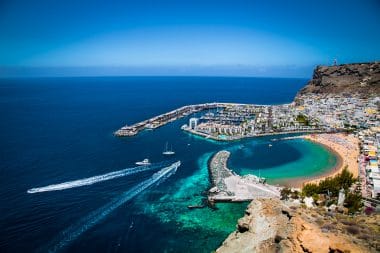
In the interior of the island, the mountains stretch 2000 meters high into the sunny sky. Impressive monoliths tower over the lonely golden mountains. Cliffs, adventurous gorges and enchanting Canarian palm trees on the slopes give this region its special character. From January, the undemanding almond trees with pink clouds of blossom set delicate accents in a wild landscape. Gorges often present themselves as a subtropical paradise garden with sprawling plants that shine in competition.
What a backdrop! If you appreciate the forest solitude and breathtaking landscapes, you would head for the mountains. It’s hard to understand why very few Gran Canaria visitors get up to discover this magnificent mountain world. It may be because the highest peak in Gran Canaria has temperatures that are 10 to 20 degrees lower than those on the coast.
The beauty of this region is in the mind of the beholder. While the mountain biker is unlikely to have an eye for it on his fast-paced tour, the charm of the local nature opens up to the walker step by step.
The heart of this region is Tejeda. Here you feel like you’re in another world. The terraced mountain village is representative of the “other Gran Canaria”. The town has rightly been named “one of the most beautiful villages in Spain”.
On the other hand, the country town of Teror, as an important market town with an impressive pilgrimage church, forms the religious centre.
Artenara is a fascinating cave site. To this day, more than 1500 inhabitants still live in the caves. At 1270 meters, Artenara is the highest town in Gran Canaria.
On the sunny side – in the beautiful south of Gran Canaria
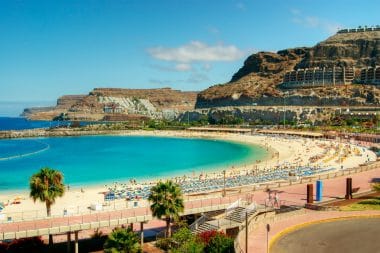
When the ground greedily absorbs the water, drops bounce off palm leaves and the rivulets swell into streams – then it rains in the south of Gran Canaria. This spectacle only takes place a few times a year. The southern climes of the island are among the Germans’ favourite destinations – plenty of sun, almost all year round. A holiday resort on the Costa Canaria even bears the name “Sonnenland” – the name keeps what it promises.
Costa Canaria is a continuously built-up stretch of coastline that stretches from Bahía Feliz in the east to Pasito Blanco in the west. Further west, the Costa Mogán joins with the main towns of Puerto de Mogán and Puerto Rico .
Highlights on the holiday coast of Gran Canaria with guaranteed sunshine
- Playa de Inglés – admittedly: In view of the sprawling hotel landscape and the synonym for mass tourism, the seaside resort could be a nightmare for many a guest. However, the super beach is right on the doorstep and there are countless leisure activities on land and water. Without a doubt, this beach is one of the best beach areas in the Canary Islands.
- Dunas de Maspaloma: In the dunes of Maspalomas, the dune ridges tower up to 30 meters high and form one of the most magnificent landscapes in Gran Canaria.
- Puerto Rico: The terraced hotel town built into the hillside has made a name for itself as a water sports center. From the sea, the city looks imposing – on closer inspection, the apartment complexes built in 1970 steal its poetry.
- Puerto de Mógan is the westernmost part of the seaside resorts in the south. In front of the former fishermen’s nest, a charming holiday village was built in the 1980s with flat white houses and narrow streets. The village stretches like a semicircle around the bay and enchants with a beautiful beach. The original village rises picturesquely on the northern steep slope.
The most important excursion destinations
1. Dunes of Maspalomas
The extensive sand dunes in the south of Gran Canaria are among the most famous natural wonders of the island. They offer stunning desert scenery that is perfect for long walks.
2. Roque Nublo
This imposing rock monolith is one of Gran Canaria’s most recognizable landmarks. The climb offers spectacular views of the surrounding mountains and valleys.
3. Palmitos Park
A botanical garden and animal park with an impressive variety of birds, reptiles and mammals. Especially the dolphin and parrot shows are a highlight for families.
4. Puerto de Mogán
A picturesque fishing village in the southwest of the island, often referred to as “Little Venice”, with beautiful canals, bridges and colourful houses.
5. Pico de las Nieves
The highest point on the island offers breathtaking views and is a popular spot for hiking and photography.
6. Jardín Botánico Viera y Clavijo
The largest botanical garden in Spain, which is home to a wide variety of endemic plants. A must for nature lovers.
7. Cueva Pintada
An archaeological site and museum in Gáldar that offers an insight into the life of the island’s indigenous people, the Guanches. Here you can marvel at well-preserved cave paintings.
Important telephone numbers
- Emergency call (police, fire brigade, ambulance): 112
- Police: +34 928 482 680
- Fire Brigade: +34 928 320 000
- Ambulance service: +34 928 313 370
- German Embassy in Madrid (responsible for Gran Canaria): +34 91 557 9000
- Gran Canaria Tourist Office: +34 928 219 600
German Doctors
- Dr. Andreas Asprion: General Medicine Practice, Playa del Inglés, +34 928 766 449
- Dr. Michael Popp: General Practice for General Medicine, Puerto Rico, +34 928 560 016
Opening hours
- Shops: Usually Monday to Saturday from 9:30 a.m. to 9:00 p.m., many shopping centers are also open on Sundays.
- Supermarkets: Usually daily from 8:30 a.m. to 10:00 p.m.
- Restaurants: Lunch from 13:00 to 15:30, dinner from 19:00 to 23:00.
- Banks: Monday to Friday from 8:30 a.m. to 2:00 p.m.
Popular Hotels
1. Seaside Grand Hotel Residencia
A luxurious 5-star hotel in Maspalomas with superior service and an exclusive spa. Ideal for those seeking relaxation.
Lopesan Costa Meloneras Resort, Spa & Casino
A resort with an impressive pool area, spa and numerous restaurants, directly on the beach of Meloneras.
3. Hotel Riu Palace Meloneras
A stylish hotel in Meloneras with excellent service, direct access to the beach and a beautiful garden area.
Radisson Blu Resort & Spa, Gran Canaria
A hotel with luxurious rooms and apartments, ideal for families and couples, located right on the beach of Arguineguín.
5. H10 Playa Meloneras Palace
An upscale hotel in Meloneras with elegant rooms, spa, pools and direct access to the beach.
Museums
1. Museo Canario
The Museo Canario in Las Palmas shows archaeological finds of the indigenous people of Gran Canaria, the Guanches, and offers a fascinating insight into their culture.
- Opening hours: Monday to Friday from 10:00 to 20:00, Saturday and Sunday from 10:00 to 14:00.
- Website: Museo Canario
2. Casa de Colón
This museum is dedicated to the explorer Christopher Columbus and is located in a beautiful historic building in Las Palmas. It shows his travels and the influence of the discovery of America.
- Opening hours: Monday to Saturday from 10:00 a.m. to 6:00 p.m., Sunday and public holidays from 10:00 a.m. to 3:00 p.m.
- Website: Casa de Colón
3. Museo Elder de la Ciencia y la Tecnología
An interactive science and technology museum in Las Palmas, ideal for families and technology lovers.
- Opening hours: Tuesday to Sunday from 10:00 to 20:00.
- Website: Museo Elder
Restaurants
1. La Aquarela
An upscale restaurant in Patalalavaca known for its creative cuisine and excellent service.
- Address: Barranco de la Verga, s/n, Patalavaca, Gran Canaria
- Phone: +34 928 735 891
2. Restaurante El Salsete
A popular restaurant in San Fernando that serves Canarian dishes with modern twists. The atmosphere is friendly and welcoming.
- Address: Calle Luján Pérez 11, San Fernando
- Phone: +34 928 772 759
3. Restaurante Olivia
A charming eatery in Maspalomas that offers Mediterranean and international dishes in a cozy setting.
- Address: Avenida de Gran Canaria, 28, Playa del Inglés
- Phone: +34 928 760 960
4. Restaurante 360
A modern restaurant with spectacular views over Puerto Rico. The menu offers international and Mediterranean cuisine with a focus on fresh seafood.
- Address: C.C. The Point, Puerto Rico
- Phone: +34 928 725 050
5. Restaurante Grill El Cenador
A traditional grill restaurant in Las Palmas, known for its meat dishes and rustic atmosphere.
- Address: Calle Pérez Galdós 15, Las Palmas
- Phone: +34 928 493 803
Sunny beaches, dream paths, several island paths, high mountains, quiet valleys, wide lakes: Gran Canaria has great nature experiences in store.


